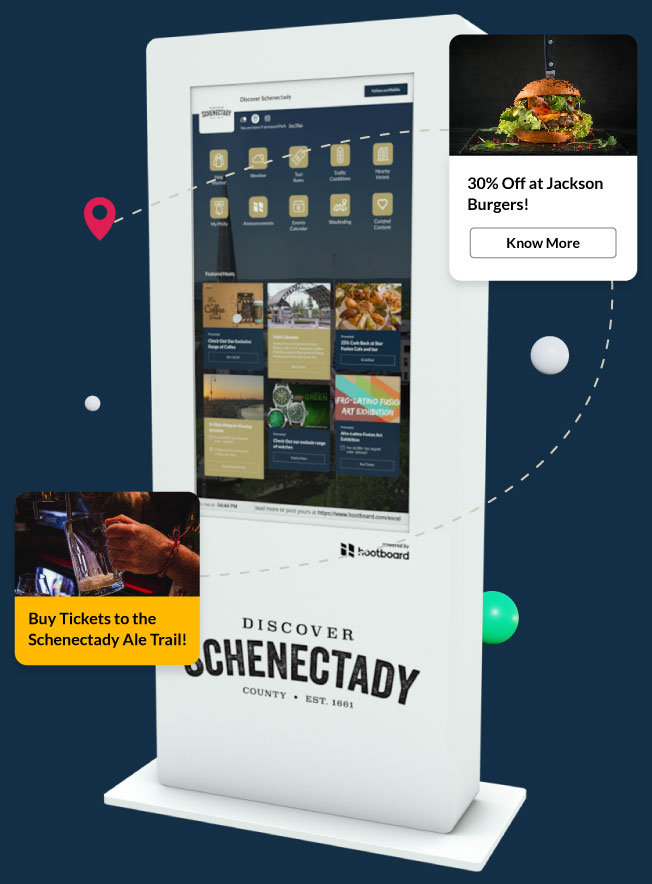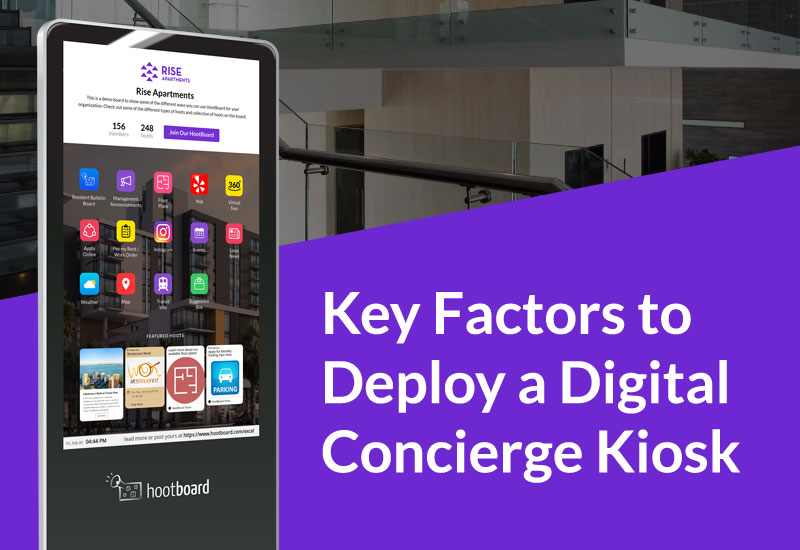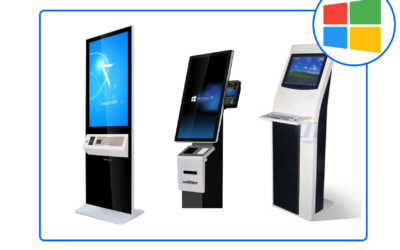The rise of digital concierge kiosks is transforming customer service in various sectors, from hospitality to retail. As businesses adopt this growing trend, making informed decisions about the deployment of such kiosks becomes crucial.
Digital concierge kiosks are rapidly becoming an integral part of the customer service landscape, owing to their ability to streamline operations and enhance user experience. With the global self-service kiosk market growing at a CAGR of 10%, businesses across various industries are increasingly leveraging these interactive platforms to meet their customers’ evolving needs.
The rising demand for touch screen kiosks and the surge in self-service solutions underscores this growing trend. These kiosks serve as digital signage, often equipped with check-in software and other functionalities that make them an essential part of the digital transformation trend in retail signage. Notably, they’re playing a key role in the hospitality sector, where hotel digital concierges are becoming more prevalent. The increasing penetration of smartphones has further amplified the offering of digital concierge services.
Given the rapid growth and wide-ranging applications of these kiosks, it’s no surprise that they’re being hailed as the future of customer service. However, deploying a digital concierge kiosk is a significant investment that requires careful planning and consideration. Businesses must make informed decisions considering factors like their specific goals, the physical location of the kiosk, hardware and software requirements, data security, maintenance support, system integration, and user education.
1. Identifying Your Objectives
Before deploying a digital concierge kiosk, it’s important to define your specific goals. These could be:
- Enhancing customer service
- Reducing staff workload
- Increasing revenue through upselling or cross-selling
Ensuring these objectives align with your overall business strategy will help maximize the benefits of your digital kiosk. Now that we’ve established our objectives, let’s consider where to place the kiosk.

2. Location and Placement
Choosing the right physical location for your kiosk is paramount. Factors to consider when selecting the placement can include things like:
- High foot traffic areas
- Proximity to related services or products
- Accessibility for all users
Ensuring visibility and accessibility can increase user engagement. With a suitable location identified, the next step involves choosing appropriate hardware.
3. Hardware
The hardware you choose for your kiosk will largely depend on your specific needs and objectives. Considerations may include:
- Screen size and resolution
- Touchscreen capabilities
- Durability and resilience to vandalism
Choosing the right hardware ensures that your kiosk is user-friendly and robust. However, hardware is just one piece of the puzzle; equally important is the software that powers the kiosk.

4. Software
Your kiosk’s software should be intuitive and easy to use. Key factors to consider include:
- User interface design
- Multilingual support
- Ability to update content easily
A well-designed software can make your kiosk more engaging and useful to customers. But usability shouldn’t come at the expense of security and privacy.
5. Security and Privacy
Ensuring data security and privacy compliance is crucial when deploying a digital kiosk. Key considerations include:
- Secure payment processing
- Protection of personal information
- Compliance with data privacy regulations
Protecting user information and interactions builds trust with your customers. With security measures in place, let’s now move on to the importance of maintenance and support.

6. Maintenance and Support
Regular maintenance and support are crucial for the smooth operation of your kiosk. Considerations include:
- Regular software updates
- Hardware cleaning and servicing
- Quick response to issues
A well-maintained kiosk can provide reliable service to your customers. But your kiosk shouldn’t exist in isolation; integrating it with other systems can increase its effectiveness.
7. Integration with Other Systems
Your kiosk should ideally be integrated with your other systems for maximum efficiency. Key integrations could include:
- Point of sale systems
- Inventory management systems
- Customer relationship management systems
Integration allows for streamlined operations and better data analysis. Finally, don’t forget about training and user education.
8. Training and User Education
Training staff and educating users on how to use the kiosk is essential. This includes:
- Training sessions for staff
- Clear instructions for users
- User guides and resources
Ensuring that both your staff and users are comfortable with the kiosk will help to maximize its usage and benefits.
Deploying a digital concierge kiosk is a significant investment, but with careful planning and consideration of these key factors, you can ensure a successful implementation that enhances your customer service and contributes positively to your business.
Conclusion
It’s important to thoroughly evaluate these key factors before deploying a digital concierge kiosk. Identifying objectives, choosing the right location and hardware, selecting suitable software, ensuring security and privacy compliance, regular maintenance and support, integration with other systems, and proper training and user education are all crucial elements for a successful implementation.
Taking these factors into consideration will help maximize the benefits of your kiosk and contribute to the overall success of your business. So, it is important for any business to carefully consider these factors when planning to deploy a digital concierge kiosk.
This growing trend has the potential to enhance customer service, reduce staff workload, and increase revenue through upselling or cross-selling.
Keep these key factors in mind and you’ll be on your way to providing a seamless and efficient digital concierge experience for your customers. So, whether you’re in the hospitality or retail industry, deploying a digital concierge kiosk can greatly benefit your business.
With careful planning and consideration of these factors, you can ensure a successful implementation that will ultimately contribute to the success of your business. The future is digital, so why not embrace it with a digital concierge kiosk?




